75 F. maximum temperature yesterday in the Twin Cities.
66 F. average high on September 28.
62 F. high on September 28, 2016.
September 29, 1876: An abnormally cool day occurs, with a high of 45 in the Twin Cities (normally the high should be 65 this time of year).
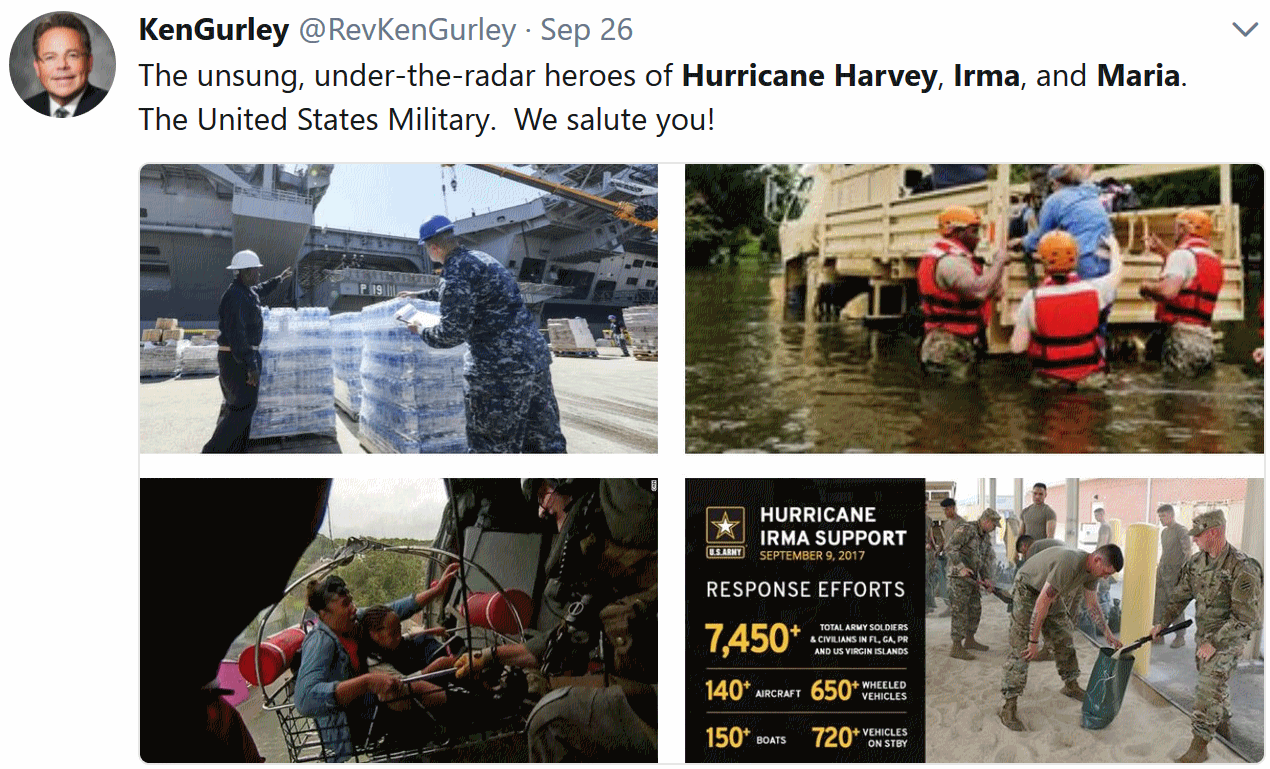
Sunday Rain – Record Setting Month for Hurricanes
Residents of Puerto Rico continue to suffer through the aftermath of Maria: no power, few cell towers, limited food, water and medicine, and a growing sense of dread among survivors. The risk of infection, disease, even cholera and malaria, is off the scale.
September may have been the most violent month for hurricanes in the Atlantic on record. Irma, Katia, Jose, Lee and Maria set a record for the most hurricane energy of any month, according to researchers.
September ’17 may wind up as the costliest month too, exceeding $211 billion in damage from Katrina, Rita & Wilma in 2005. And hurricane season won’t wind down until November.
A northeast breeze cools us off a a bit today. Plan outdoor activities for Saturday, especially early. Showers arrive late tomorrow, with heavier, steadier rain on Sunday. I’m just the messenger.
Models show a series of showery clippers next week with highs in the 60s – maybe a first frost by the third week of October?
Tampico, Mexico saw a real-life “fishnado”; a shower of fish, probably associated with a waterspout. Check out the blog!
Colors Peaking Up North. Colors are peaking from Leech Lake to Roseau and Warroad this weekend; Brainerd and Alexandria Lakes about 1 week away from peak color. Twin Cities colors may not peak until third week of October at the rate we’re going. Source: Minnesota DNR.
 Drought Trends. NOAA data shows drought easing over Minnesota, but pockets of moderate to severe drought linger over the Midwest, with more serious conditions across the Dakotas.
Drought Trends. NOAA data shows drought easing over Minnesota, but pockets of moderate to severe drought linger over the Midwest, with more serious conditions across the Dakotas.
Wet Bias Next Week. Check out predicted rainfall amounts from Sunday through Thursday of next week; some 3-4″ amounts possible south and west of the Twin Cities – maybe 2″ from Willmar to St. Paul to Rice Lake. Map: NOAA.
Flooding Potential for Florida. Much of Florida is still cleaning up from Irma, and models suggest a tropical disturbance or wave capable of some 3-6″ rainfall amounts by Thursday of next week. 1-3″ amounts are predicted for parts of the Upper Midwest and New Mexico – not a drop for California and Arizona.
Trending Cooler. Mother Nature ‘giveth, and she ‘taketh away. Yesterday’s ECMWF solution hinting at 80F seems like a meteorological mirage now. A series of Canadian clippers will pull a parade of cool fronts into Minnesota, with highs mostly in the 60s. I still don’t see a widespread frost through the end of next week. Twin Cities numbers: WeatherBell.
Strong Zonal Flow – Slightly Cooler Than Average by Mid-October? Confidence levels are low this far out, but GFS model guidance looking out 2 weeks suggests summerlike warmth for the southern third of the USA, but a series of cold swipes will have people reaching for jackets from Fargo and Duluth to Green Bay, Buffalo and Boston.
Warm, Wet Bias Into First Week of October. A cold trough of pressure will bring a slap of chilly air into the northwestern third of the USA, but most of the nation east of the Rockies will experience a warm bias over the next 10 days; drier for New England, but wetter for most of the nation, based on NOAA guidance.
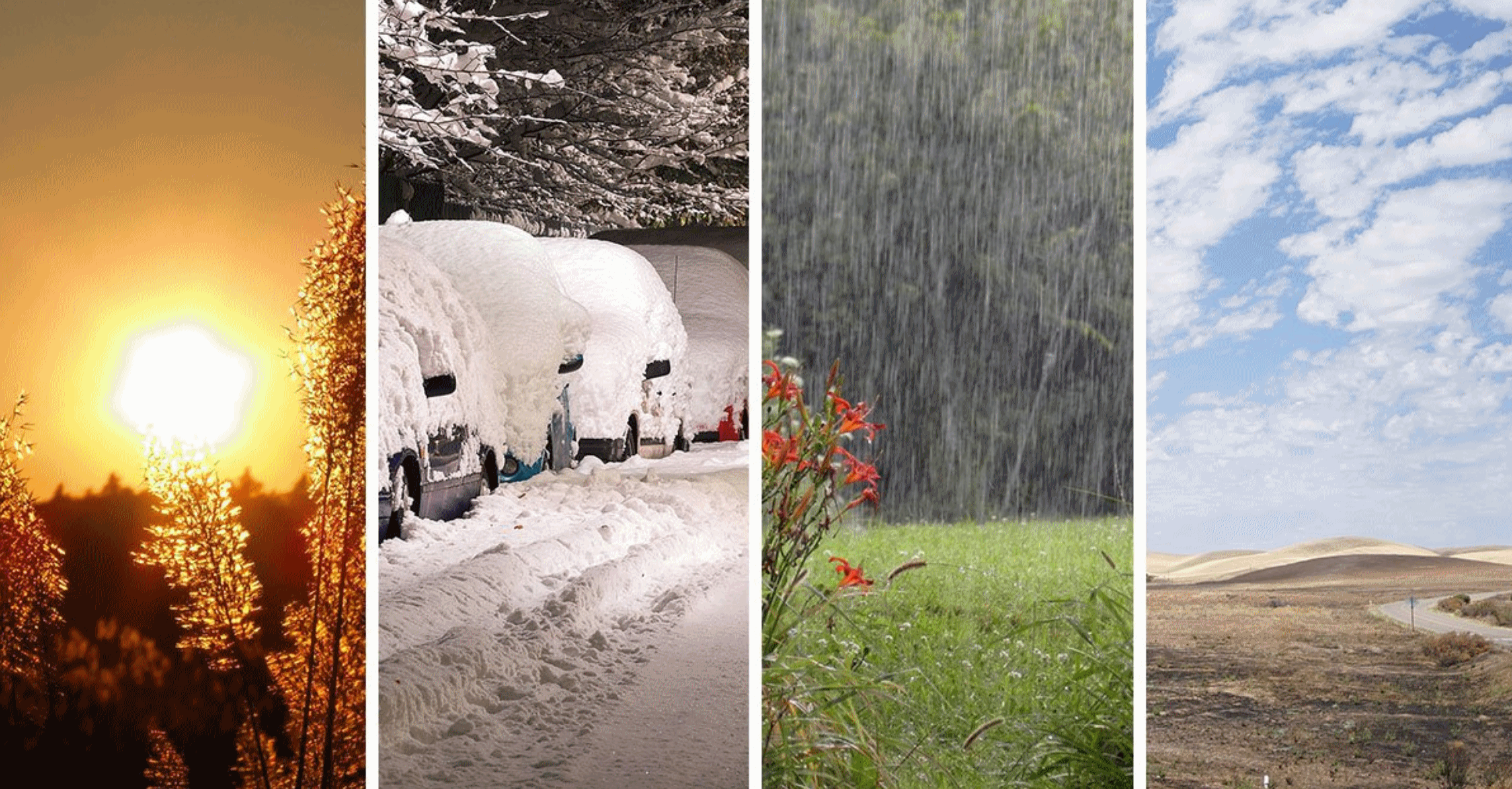
The Data That Prove Bad Weather Alters Your Mood.
Quartz breaks down some new research: “…
Meteorological data considered included daily maximum temperature, temperature range, precipitation measures, cloud cover, and relative-humidity statistics, all measures considered central to the relationship between weather and emotional states in previous, smaller studies. The researchers write that they were able to find “substantial evidence that less ideal weather conditions relate to worsened sentiment.” Specifically, they noted that cold temperatures, hot temperatures, precipitation, narrower daily temperature ranges offering little shift from steadily unpleasant conditions, humidity, and cloud cover were all associated with worsened expressions of sentiment, even when excluding weather-related posts…”

Puerto Rico’s Looming Medical Crisis is “About to Explode”.
CNN explains: “…
The desperation that all these people have, they’ve lost everything — on the whole island,” she says. With the fuel and power shortages, she expects the No. 1 health concern in the days ahead will be infectious diseases. As people who need medications do not get them, she predicts mental health issues will become a problem as well. “It will get worse before it gets better,” she says. Her feelings are shared by other health care providers on the island, who believe a medical crisis is about to unfold. But it isn’t inevitable, since preventive steps can be taken now. That’s the opinion of Dr. Robert Fuller, an emergency medicine physician at University of Connecticut and International Medical Corps...”

Puerto Rico’s Grid Needs a Complete Overhaul. CityLab has the story; here’s an excerpt: “…Even before this most recent storm, Puerto Rico’s energy infrastructure was precarious. “It was already unsustainable; it was a terrible mess,” says Judith Enck, the former EPA administrator for Region 2, which includes Puerto Rico and the U.S. Virgin Islands. “Even if you had a modest wind storm, people would typically lose power for days at a time.” Enck identifies dual culprits: power plants that required fossil fuels, and “rickety old transmissions.” Puerto Rico’s existing energy infrastructure relied primarily on oil or coal. And despite unreliable and unsustainable power sources, she adds, residents were paying some of the highest utility rates in the country…”
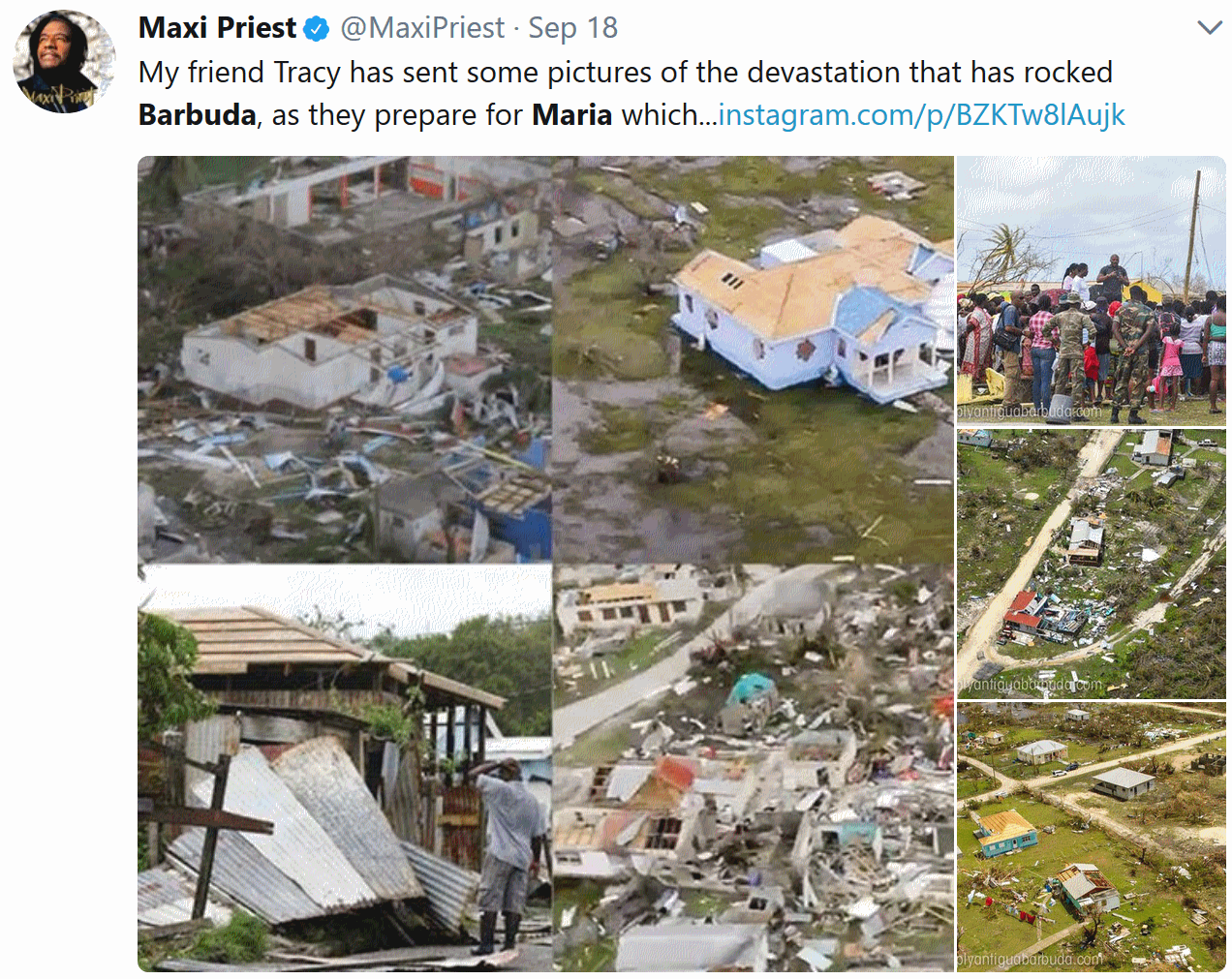
Hurricane-Ravaged Barbuda and Dominica Must “Build Back Better”.
Reuters explains: “…
In the case of Barbuda an “island that has to be built from scratch” getting urban planning right is vital to limit the potential of damage of future hurricanes, Faieta said. This includes building shelters and storage areas for food, water and seeds in safe locations, away from flood-prone areas on high-ground, she said. Improving early warning systems is also important, she said. This includes providing communities with cellphone technology to tell people where to pre-position food and seeds ahead of a hurricane and mapping flood-plain areas. In Dominica, a mountainous island, reforestation will be also important to lessen the hazard of landslides triggered by heavy rains…”

It’s Not Just Puerto Rico: 6 Other Caribbean Island Nations Are In Crisis After the Hurricanes.
Vox has the story: “…
Irma and Maria collapsed the infrastructure, electricity, and communications lines of the British Virgin Islands: The British Virgin Islands were beaten by both Hurricanes Irma and Maria (though Maria caused less damage than some feared). Still, the collapsed infrastructure and knocked out electricity and communications lines were enough to inspire Virgin Group founder Richard Branson to call for a Marshall Plan to help rebuild the British territory. (His own private island, Necker, was not spared by the storms.) “These hurricanes are causing unimaginable destruction,” Branson wrote on his website. A third of Dutch St. Martin’s buildings were ruined: The Island of St. Martin, which is split into two sides overseen by French and Dutch control, was also walloped by Irma. A third of the buildings on the Dutch side of the island were destroyed, and 90 percent were damaged, according to Reuters. So far, more than a dozen people died as a result of the storm, with hundreds registered as missing…”

Primal Screams, Blood and Burns: What Its Like to Survive a Lightning Strike. Here’s a clip from a jaw-dropping account at The Washington Post: “...We were struck at the lakeside, each of us channeling various amounts of the bolt that hit the tree at our back, and me and Aidan in head behind our left ears, passing through and across our bodies, until it made explosive contact with the ground,” Lovera later recounted on Facebook. “I have never been more proud of my children, who despite severe burns, punctured eardrums, and much blood, in semiconsciousness, dragged themselves to safety,” Lovera wrote earlier this month. “Aidan’s screaming brought me to consciousness, disoriented at seeing the blood clotted on the left of his head, and the blood and burns than ran down my body, and the trauma of seeing Nadia facedown up the hill from me, all of us in severe shock. My clothes had been shredded, burned and fused to parts of my body, and I could not move as I lay on my back…”
File photo: Brad Birkholz.
Freeze-Free Season in the Twin Cities. Some of this is urban heat island, some of it is the background warming we’re seeing (everywhere).
NOAA explains: “
The freeze-free season (growing season), lengthened by 16 days from 1951-2012. Most of this change has been due to an earlier end date of the freezing season (an earlier spring thaw). In most other parts of the Great Lakes region, the length of the freeze-free season is tied closely to the number of days below freezing. Through the late-80s and early-90s, this was not necessarily the case for Saint Paul, as the freeze-free period increased steadily despite winters with more cold days.”
Graphic credit: “The green line represents the 9-year moving average of length of the time between the last freeze of spring and the first freeze of fall, theh freeze-free period. The shaded band represents the standard deviation.”
2016: A Twin Cities Growing Season Like No Other (on record). Here’s an excerpt from the
Minnesota State Climatology Office: “
In 2016 the Twin Cities observed its longest frost-free season on record, tallying 219 consecutive days without a 32 degree F reading at the MSP airport. The first such reading of the 2016 fall was also by far the latest on record, and did not come until November 18th–11 days later than the old record of November 7, set in 1900. The Twin Cities “threaded” record for these purposes extends back to 1873. Historically, roughly 90% of autumn seasons produce a 32 degree F reading in the Twin Cities by October 28, and the first freezing reading has occurred in November just eight times (including 2016). Although the autumn season has warmed rapidly in the last several decades, all of the other November first-freeze dates were in the 20th and 19th centuries, with the most recent one on November 6, 1958…”

Zero Emission Buses That Use No Fuel are Coming to Minnesota.
GoMN has the news: “
Buses with no tailpipes are on their way to the Twin Cities. Well, they’re not literally on their way because they haven’t been built yet. But Metro Transit says a new rapid bus route that starts running in a couple years will use six brand new battery-electric vehicles. And these aren’t hybrid buses – they’ll use no fuel at all. The zero-emission buses will be built in St. Cloud by New Flyer, which says it’s North America’s biggest maker of public transit buses. For 15 years Metro Transit’s fleet has included hybrid buses that are powered by both diesel fuel and electricity. They’ve now got 134 of those. But the agency says the new buses just ordered from New Flyer will be their first that don’t use fuel…”
California Considers Following China With Combustion-Engine Car Ban. Bloomberg has the story: “The internal combustion engine’s days may be numbered in California, where officials are mulling whether a ban on sales of polluting autos is needed to achieve long-term targets for cleaner air. Governor Jerry Brown has expressed an interest in barring the sale of vehicles powered by internal-combustion engines, Mary Nichols, chairman of the California Air Resources Board, said in an interview Friday at Bloomberg headquarters in New York. The earliest such a ban is at least a decade away, she said. Brown, one of the most outspoken elected official in the U.S. about the need for policies to combat climate change, would be replicating similar moves by China, France and the U.K…”
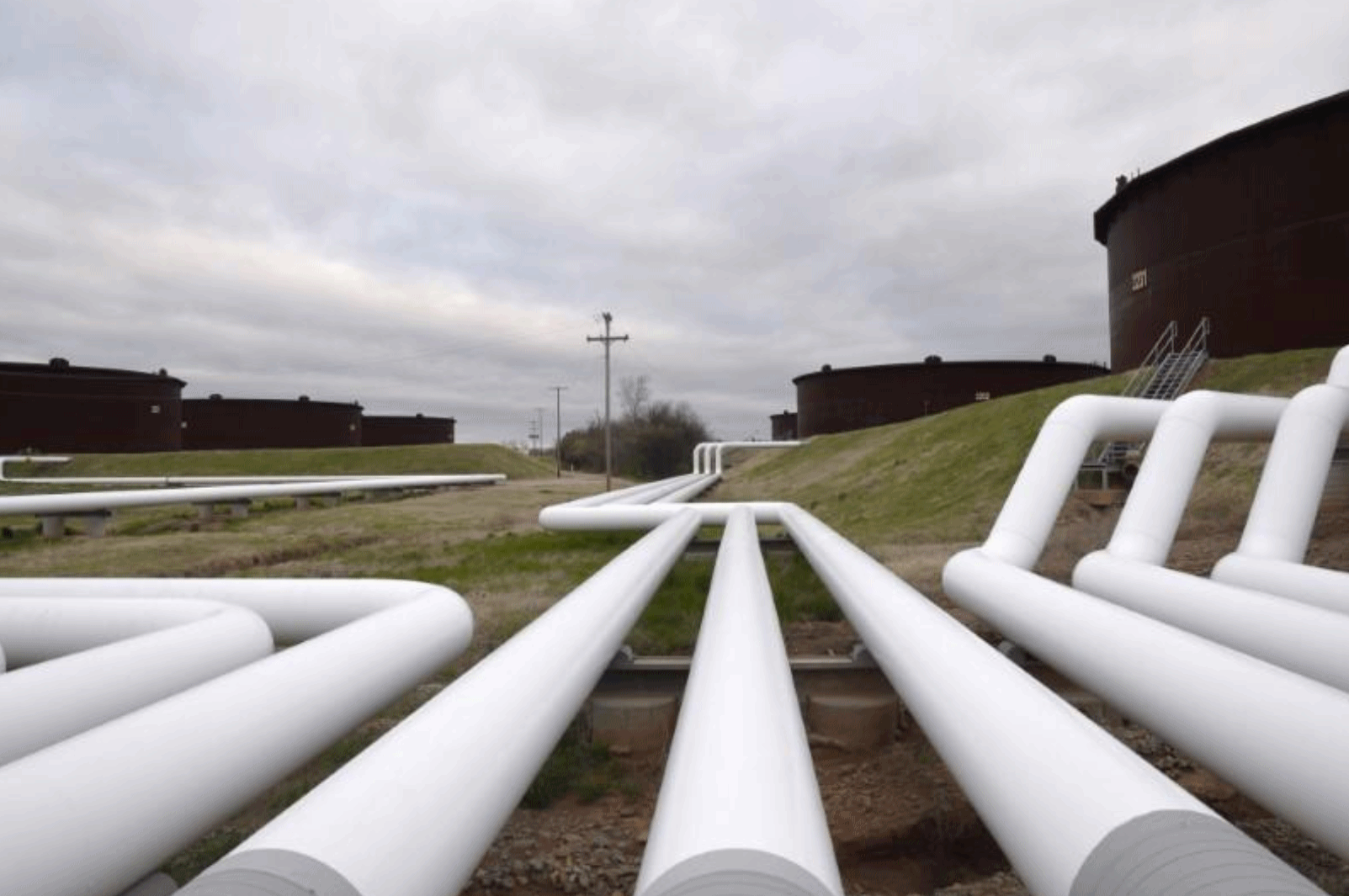
Minnesota Public Hearing Begin for Enbridge’s $6.5 Billion Oil Pipe Expansion.
Reuters has an update: “…
The bulk of the line’s U.S. portion passes through Minnesota, the last jurisdiction to review it. A decision to not grant permission would bar work for construction in state, although the company can appeal, and the current line remains operational. Enbridge spokesman Michael Barnes said: “We are eager for the hearings to get under way and the facts to be presented. This will be a detailed process, which will show the need for the replacement project.” In a surprise move this month, Minnesota’s Department of Commerce opposed the upgrade, saying refineries in the state and the upper Midwest “are not short of physical supplies of crude oil, and that they have little room to increase total crude runs...”
File photo: “Pipelines run to Enbridge Inc.’s crude oil storage tanks at their tank farm in Cushing, Oklahoma, March 24, 2016. Picture taken March 24, 2016.” REUTERS/Nick Oxford.
Work and the Loneliness Epidemic.
Harvard Business Review has a must-read article: “…
There is good reason to be concerned about social connection in our current world. Loneliness is a growing health epidemic. We live in the most technologically connected age in the history of civilization, yet rates of loneliness have doubled since the 1980s. Today, over 40% of adults in America report feeling lonely, and research suggests that the real number may well be higher. Additionally, the number of people who report having a close confidante in their lives has been declining over the past few decades. In the workplace, many employees — and half of CEOs — report feeling lonely in their roles...”
 Oklahoma City was rated the riskiest city in the country for natural disasters because of its tornadoes and a recent spate of earthquakes that scientists have linked to the local oil industry. Next on the danger list was a shocker: Silicon Valley’s San Jose, perennially one of the nation’s hottest and priciest real estate markets. Rding out the top five were Los Angeles and Bakersfield, in California, and
Oklahoma City was rated the riskiest city in the country for natural disasters because of its tornadoes and a recent spate of earthquakes that scientists have linked to the local oil industry. Next on the danger list was a shocker: Silicon Valley’s San Jose, perennially one of the nation’s hottest and priciest real estate markets. Rding out the top five were Los Angeles and Bakersfield, in California, and
10 Alarming Triggers for Alzheimer’s Disease. ActiveBeat takes a look at some of possible precursors: “
Danish researchers found a link between Alzheimer’s and rosacea, the chronic inflammatory skin disorder in elderly patients. Rosacea produces higher levels of matrix metalloproteinases and antimicrobial peptide proteins that are responsible for brain-wasting disorders. The study printed in the Annals of Neurology concluded that patients with Rosacea had a 7% higher risk of Alzheimer’s. Out of those people, women with rosacea were 28% more likely to develop Alzheimer’s, where men were only 16% more likely to develop Alzheimer’s...”

Cancer Warnings on Coffee May Be Coming to California.
Food & Wine has the story: “
Americans drink a lot of coffee: With one estimate saying the average coffee consumer slugs back about three cups per day. The good news is that, in general, science says all that joe is good for us. Recent studies have shown that coffee can cut mortality rates (multiple studies actually), reduce the risk of Multiple Sclerosis and benefit your liver. But no beverage is perfect (even too much water can kill you), and coffee producers openly admit that roasted beans contain acrylamide—a naturally occurring chemical that is also designated by the World Health Organization as “probably carcinogenic to humans…”
B.o.B. Has Technically Already Raised Enough Money to Prove the Earth Isn’t Flat. There are no words.
Gizmodo reports: “
Hip-hop star B.o.B., who last year started a minor feud with astrophysicist Neil deGrasse Tyson over the extremely resolved question of whether the Earth is flat (it is not), apparently does not consider the matter settled. Last week, B.o.B. created a GoFundMe page to prove to him that the world is, in fact, curved. His plan? “I would like to send one, if not multiple satellites as far into space as I can or into orbit as I can to find the curve,” B.o.B. said in a promotional video for the campaign on Monday. “I’m really … I’m looking for the curve...”
In Our Troubled World, Disaster Movies Are Becoming Obsolete.
The Guardian explains: “…
A troubled world doesn’t lead necessarily to a hunger for escapism in our entertainment. Quite the contrary. If the prospect of a dystopian or unjust reality quenched our need to see it reflected and analysed, then the recent TV adaptation of The Handmaid’s Tale wouldn’t have found the acclaim or the audience that it did, and the racially charged horror movie Get Out would not already be one of the highest-grossing films of the year. It’s a truism that great art flourishes under hostile environments and administrations. But if the future appeal of worst-case scenarios such as Sharknado or Independence Day looks in doubt, then the beneficiaries will be those film-makers driven to ask why exactly our world is so messed up rather than imagining how much worse it could be.”
Image credit: “Sharknado 4. ‘Sharknado may have knowingly pushed the idea of natural catastrophe into absurdity. But only just.” Photograph: Supplied.
Fishnado. Rain in Tampico, Mexico Included Small Fish. It’s true, I read it on the Interweb. Here’s an excerpt of a story at
sciencespacerobots.com: “
Northeastern Mexico received small fish as precipitation on Tuesday. The fish fell from the sky along with a light rain in the coastal city of Tampico. Tampico is port city located in the Mexican state of Tamaulipas on the western Gulf of Mexico. Evidence of the fish rain was posted on Facebook by the Protección Civil Tamaulipas. They call it a curious case of small fishing falling from the sky with a light rain. It shows a tiny fish that fell on a sidewalk and a bag with four other specimens. Mexico has experienced a couple large earthquakes lately but these are not related to the fish event. The cause is thought to have been a waterspout. A CBC story notes that there have been stories throughout human history of fish and other animals falling from the sky. It says scientists believe waterspouts can suck fish out of the water and then deposit them on the coast...”
“We make a living by what we get. We make a life by what we give.” – Winston Churchill
TODAY: Partly sunny and cool. Winds: NE 5-10. High: 65
FRIDAY NIGHT: Clear to partly cloudy. Low: 47
SATURDAY: Sunny start, then increasing clouds. A few showers late. Winds: SE 10-15. High: 68
SUNDAY: Cool and damp. Heavier, steadier rain. Winds: SE 10-20. Wake-up: 56. High: 63
MONDAY: Front stalls. Showers, few T-storms. Winds: S 10-15. Wake-up: 57. High: 68
TUESDAY: Showers begin to taper off a bit. Winds: SW 8-13. Wake-up: 58. High: 69
WEDNESDAY: Drying out with peeks of cool sun. Winds: NW 10-15. Wake-up: 53. High: 66
THURSDAY: Bright sun, best day in sight. Winds: W 5-10. Wake-up: 52. High: near 70
Climate Stories…
Big Climate Change Price Tag for US: Climate Nexus reports: “
Extreme weather and public health issues related to burning fossil fuels could cost the United States up to $360 billion annually–nearly half of annual US economic growth–within the next ten years, according to a new report. The report from the non-profit Universal Ecological Fund found that the impacts of wildfires, hurricanes, heat waves and other extreme weather amplified by climate change, combined with air pollution, cost the United States $240 billion per year since 2007. The report comes as the US tallies up the price tag for Hurricanes Harvey, Irma and Maria, which are estimated to cost $300 billion in damages, or twice the cost of all hurricane damages within the past decade.” (
Bloomberg,
Reuters,
National Geographic)
Hurricane Maria May Be a Preview of Climate-Fueled Migration in America.
Bloomberg has the story: “…
Researchers at the International Monetary Fund, in a report released Wednesday, looked at the links between extreme weather and emigration in more than 100 countries over three decades. They found that “a rise in temperature and greater incidence of weather-related disasters increase out-migration,” according to Petia Topalova, the IMF researcher and lead author of the report. It describes migration as an “adaptation strategy for households hurt by weather shocks” and predicts that “substantial migration flows, potentially spilling across country borders, could arise if climate change causes a significant rise in sea levels…”
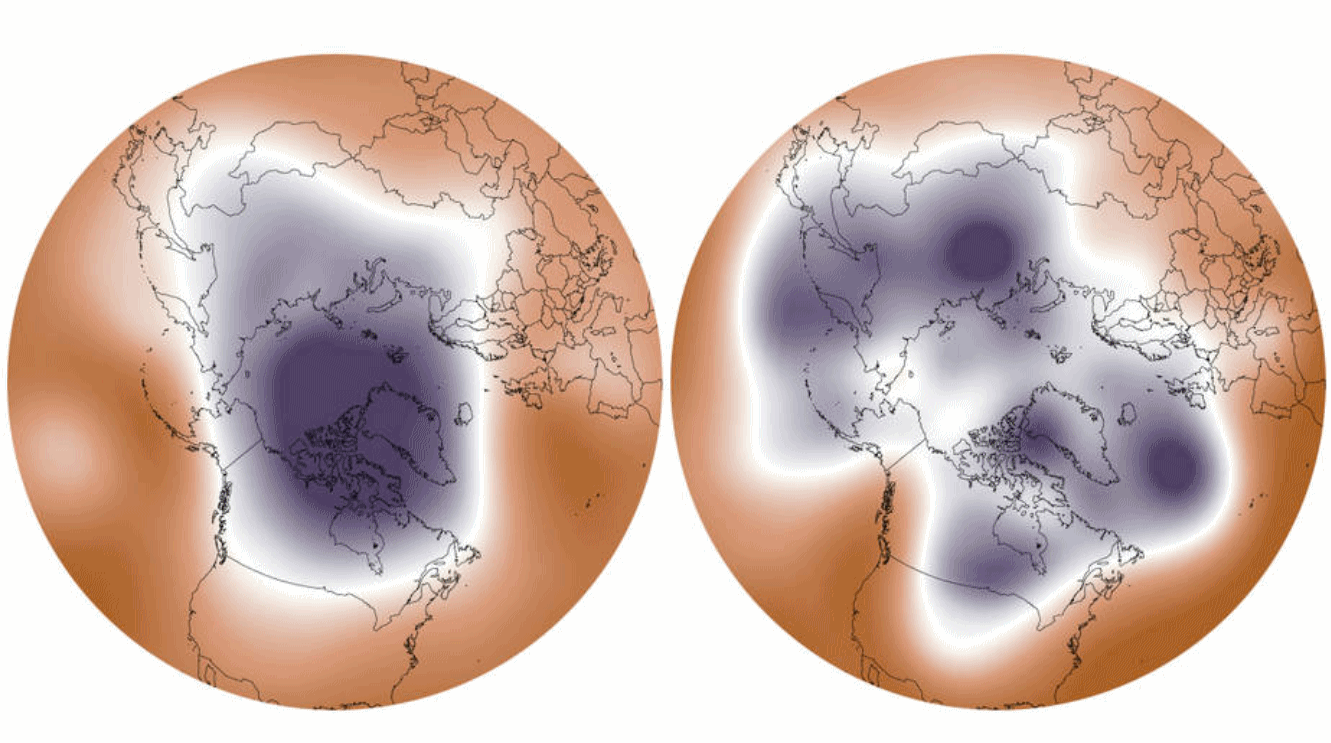
Ice Loss and the Polar Vortex: How a Warming Arctic Fuels Cold Snaps. Counterintuitive? You ‘betcha! Here’s an excerpt of an explainer at
InsideClimate News: “…
The polar vortex has always varied in strength, but the study found that the weaker phases are lasting longer and coinciding with cold winters in Northern Europe and Russia. “The shift toward more persistent weaker states of the polar vortex lets Arctic air spill out and threaten Russia and Europe with extreme cold,” said the study’s lead author, Marlene Kretschmer, a climate scientist with the Potsdam Institute for Climate Impact Research. “The trend can explain most of the cooling of Eurasian winters since 1990.” Some other scientists aren’t as sure that melting sea ice affects the polar vortex so strongly. They think other factors, like long-term variations in sea surface temperatures like El Niño, and changes in the tropics, might play bigger roles...”
Map credit: “A strong polar vortex (left, from December 2013) is centered over the Arctic. A weakened polar vortex (right, from January 2014) allows cold air to dip farther south.” Credit: NOAA
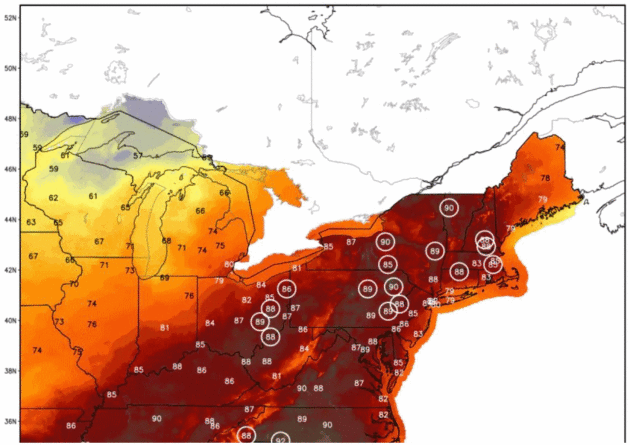
Late-September Heat Wave Leaves Climate Experts Stunned. Here’s an excerpt from a
ThinkProgress story that caught my eye: “…
There has never been a heat wave of this duration and magnitude this late in the season in Chicago,” the National Weather Service reported Tuesday evening. From Wednesday through Tuesday, for example, Chicago sweltered through “the only occurrence on record of 7+ consecutive 90°[F] days entirely within September.” Every day of the heatwave was 92°F or above, and every one set a new record high for that date…Back in the United States, the current heat wave has set records across the Midwest and East. On Monday, 92ºF was the hottest Burlington, Vermont had ever been that late in the year — by a full seven degrees, the Washington Post reported. On Sunday and Monday, Buffalo, New York saw its latest-ever consecutive 90ºF days. Records for hottest day or hottest series of days this late in the year were crushed in Minneapolis; northern Maine; Ottawa, Canada; and Green Bay, Wisconsin…”
Map credit: “Places where temperatures are projected to be within one degree of a record high Wednesday.” CREDIT: National Weather Service via WashPost/WeatherBell.com.

Europe’s Hot, Fiery Summer Linked to Global Warming, Study Shows. InsideClimate News connects the dots: “
Global warming made this summer’s record heat across Southern Europe—with its wildfires and a heat wave so vicious it was nicknamed “Lucifer”—10 times more likely than it would have been in the early 1900s, scientists said today in a study published by the World Weather Attribution research group. If greenhouse gas emissions aren’t cut soon, such heat waves will be the regional summer norm by 2050, the study concluded. The scientists, from universities and research institutions in Europe and the United States, said they are more certain than ever that human-caused global warming is a key driver of the extreme heat. As the average global temperature goes up, it becomes easier to pick out the climate change signal, said lead author Sarah Kew, a climate researcher with the Royal Netherlands Meteorological Institute...”
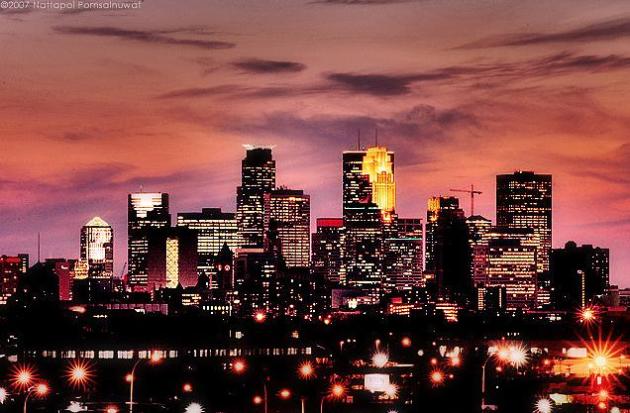
The Best US Cities to Avoid Effects of Climate Change, According to Report. Austin’s Statesman has the story; here are a couple of excerpts: “…According to the report, the Pacific Northwest is the best U.S. region to live to escape the negative effects of climate change, according to Shandas, who said that “their infrastructure tends to be newer and more resilient to major shocks” like heat and rising water. Austin, Texas, about 160 miles from Houston, which was hit hard by Hurricane Harvey, is also among the top 13 cities — in part because of durable infrastructure as well as plans to combat carbon dioxide levels and offset emissions. Here’s the full list in no particular order:
- Seattle, Washington
- Philadelphia, Pennsylvania
- Austin, Texas
- Phoenix, Arizona
- Baltimore, Maryland
- Portland, Oregon
- San Francisco, California
- Minneapolis, Minnesota
- Ann Arbor, Michigan
- Madison, Wisconsin
- Chicago, Illinois...”
Drought Trends. NOAA data shows drought easing over Minnesota, but pockets of moderate to severe drought linger over the Midwest, with more serious conditions across the Dakotas.





